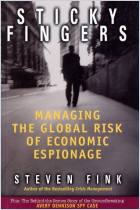Join getAbstract to access the summary!

Join getAbstract to access the summary!
Jim Harris
Blindsided
How to Spot the Next Breakthrough That Will Change Your Business Forever
Capstone, 2002
What's inside?
When a new technology smacks you in the face, steals your customers and laughs on the way out the door, you’ve been blindsided. Here’s how to avoid it (and how to do unto others).
Recommendation
In Blindsided, change expert Jim Harris discusses the startling way some major companies got "blindsided" – caught with their antenna down by fast-moving technological changes that undermined their businesses. He fills you in on how change works, and works quickly. Then, as if to make you feel better, he offers practical techniques that superior companies use to avoid being walloped. Harris tells you (consider this a warning) what to do to deal with change. Generally, this is a top-notch, straightforward book, although some corporate histories and guideposts on recognizing change may sound like retreads of other material. Still, Harris provides a guidebook for heeding and handling change. Just ask yourself the questions at the end of each chapter to find out if you need this heads up strategy check. getAbstract suggests that diagnostic dialog to business strategists and executives. Just keep looking behind you while you are reading – someone, or something, may be gaining on you.
Summary
About the Author
"Change guru" Jim Harris heads Strategic Advantage, a management consulting firm specializing in strategic planning and leadership development. His clients include Barclays Bank, Columbia Tristar Pictures, Deloitte & Touche, General Motors, IEEE, Johnson & Johnson, Nortel Networks, Sun Microsystems and the UK Cabinet Office. His book The Learning Paradox, which was published in eighty countries, was nominated for the Canadian National Business Book Award. He is a frequent speaker at conferences worldwide.



















Comment on this summary